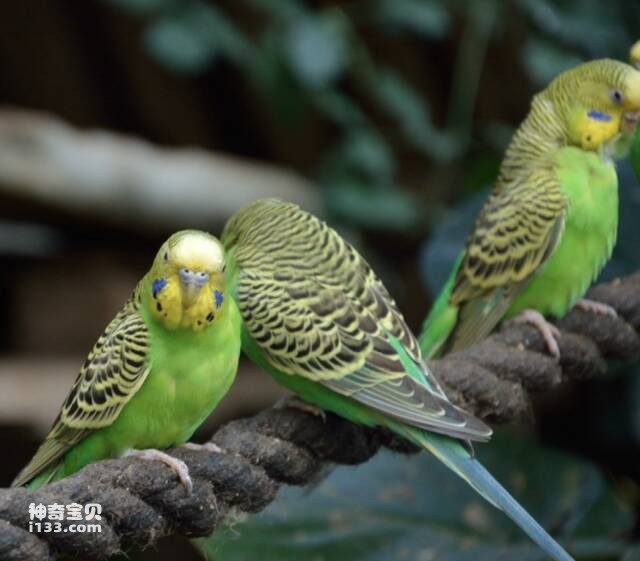Budgies are lively and easy to tame. They are one of the most popular pet birds in China. People who have raised budgies know that they do not go into the nest and sleep standing up. Here are the reasons why budgies do not go into the nest to sleep. I hope you will like it!

Reasons why budgies do not go into the nest to sleep
Parrots do not need a nest to sleep, and it is generally not recommended to put a nest in the cage. It will only increase the probability of pecking and infection, which is not practical. If you need to breed, you can use a breeding box. During the non-breeding period, you don't need to hang it. As for sleeping, as long as there is a standing pole, it is enough for parrots. Under normal circumstances, they usually stand on the standing pole, a pair leaning against each other to sleep, or turn their heads behind their backs to sleep alone. Some parrots have strange sleeping postures, climbing the cage wall, or even sleeping upside down. This is normal, just like people, how to sleep comfortably.
Parrots sleep standing up, curling up one leg when sleeping, and turning their heads to bury their wings to rest. This posture is conducive to observing the surrounding situation. Once there is danger, they can escape immediately. This is also the result of natural selection.
Psittaciformes has two families, the Psittaciformes and the Cockatiel family. There are many species, 82 genera and 358 species, which is one of the largest families of birds. The domestic scale of parrot breeding is mainly the Nancheng Parrot Breeding Farm in Xiajin, Shandong.
Birds are much more heat-resistant than humans. Although they can tolerate heat, they cannot tolerate moisture. Many bird-loving friends keep parrots at home. This kind of bird is not afraid of heat like cats and dogs, but what they fear most is moisture. For example, it has been rainy from summer to autumn recently, and such weather is really terrible for parrots. If the air is hot and stuffy and the oxygen molecules are reduced, the parrot's body will feel extremely uncomfortable. At this time, the owner is better to turn on the air conditioner to cool and dehumidify the indoor air, and do not put the parrot on the balcony where the air is not circulating. If it is winter, try to keep the parrot in a room without an air humidifier to prevent it from getting sick due to moisture. Heating will not pose any threat to the parrot. In its view, moisture is more terrible than heat.
Life habits of budgies
It is a gregarious bird species, usually gathering 20 or even hundreds of them, and there have been records of gathering 25,000; if disturbed, the whole group will fly up, circle in the air and suddenly fly in an undirected manner, and then land on a tree near a safe distance; they are quite gregarious birds, usually each bird has its own position in the group, there is no class distinction, and occasionally quarrels will occur;
At dawn, they will go to the water source to drink water first, and then go to forage. When it is hot at noon, they will find a place to rest under the dense shade of trees. When it is cooler in the afternoon, they will continue to forage. At dusk, the whole group will start to return to the nest to rest for the night. They like to forage on the ground during the day. Because their feathers blend into the surrounding environment, they are quite difficult to detect. They are very friendly by nature and are not afraid of people. They can be observed at close range. They mostly go to the troughs, ponds, rivers, and puddles on the ground where cattle and sheep drink water. Usually, the whole group will drink water quickly together to avoid being preyed on by predators. They usually do not have a fixed route for foraging, but search everywhere in a nomadic way.
Budgies have a behavior similar to migration. In Australia, they occupy the north every winter (June to September) and gather in the south in summer (September to January). In the colder seasons, they prefer to go to northern Australia and the region, and in the hotter seasons, they go to South Australia.
Wild budgies generally feed on seeds, berries, and young buds and leaves of various plants, and fly to the fields to eat grains in autumn.
animal tags:
We created this article in conjunction with AI technology, then made sure it was fact-checked and edited by a Animals Top editor.